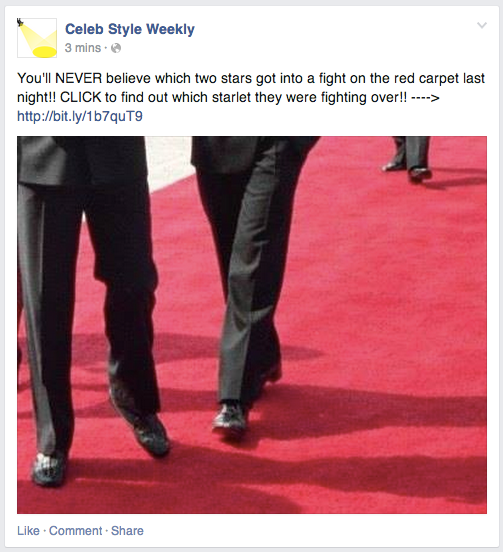Facebook Goes After “Click-Bait” Headlines With News Feed Update
- Fahad H

- Aug 25, 2014
- 2 min read

Facebook turned up the heat against “click-bait” today, announcing a News Feed algorithm change that it says will reduce the number of misleading and vague headlines that its users see.
“‘Click-baiting’ is when a publisher posts a link with a headline that encourages people to click to see more, without telling them much information about what they will see,” Facebook research scientist Khalid El-Arini and product specialist Joyce Tang wrote in a blog post. ”
Posts like these tend to get a lot of clicks, which means that these posts get shown to more people, and get shown higher up in News Feed.”

Click-bait exists because it’s often effective. It plays upon people’s natural curiosity, and has become so pervasive that several Twitter accounts — see @HuffPoSpoilers and @SavedYouAClick — have popped up to poke fun.
Facebook says its users don’t like it; even though they might click, 80% surveyed say they prefer headlines that give them a fuller picture about what’s behind the link.
Since it would be difficult for Facebook to identify click-bait through language analysis, it’s going to track how users behave after they’ve clicked through to a story, assuming that people who are fooled won’t linger on the link. Here’s Facebook’s explanation of what it will be looking at:
One way is to look at how long people spend reading an article away from Facebook. If people click on an article and spend time reading it, it suggests they clicked through to something valuable. If they click through to a link and then come straight back to Facebook, it suggests that they didn’t find something that they wanted. With this update we will start taking into account whether people tend to spend time away from Facebook after clicking a link, or whether they tend to come straight back to News Feed when we rank stories with links in them. Another factor we will use to try and show fewer of these types of stories is to look at the ratio of people clicking on the content compared to people discussing and sharing it with their friends. If a lot of people click on the link, but relatively few people click Like, or comment on the story when they return to Facebook, this also suggests that people didn’t click through to something that was valuable to them.
For marketers and others who publish on Facebook, this move should be another signal to be straightforward on the platform. Facebook is continually tuning the algorithm to improve the “quality” of the News Feed, which Facebook defines as stories and content that keep its users occupied and coming back for more. In this case, that means tell your readers clearly and plainly what to expect from a link.
Facebook Also Cracks Down On Caption Links
In a related update, Facebook also announced today that it will rank “link posts” higher than posts with links in photo captions. It’s a significant change since many publishers use a posting-links-within-captions strategy to take advantage of the higher reach that photos have historically achieved on Facebook.
Facebook said users prefer to see the extra information provided by link posts; Danny Sullivan has a detailed look at the change.








Comments